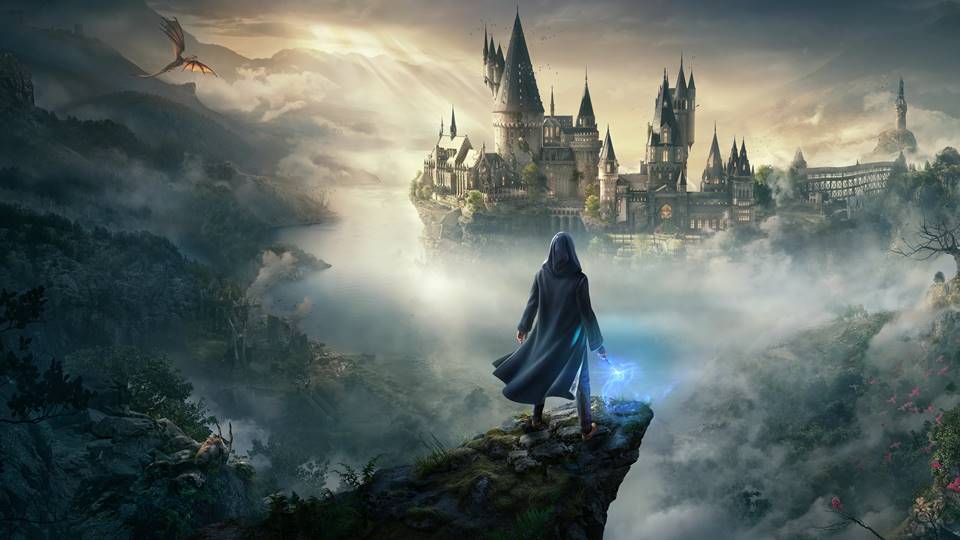Are you struggling with poor performance in Hogwarts Legacy?
Well, this guide will help you with the best Graphics Settings that will not only let you have smooth gameplay but will also retain the game’s visual quality to some extent.

Hogwarts Legacy- Best Graphics Settings to Fix Stuttering and Lag
Hogwarts Legacy is finally out on next-gen platforms and PC and it was worth the wait. The game features the magical Harry Potter world better than any other game that came before.
This was the most anticipated game of 2023 so far and it is finally here. Hogwarts Legacy lets you experience the life of a wizard in a story completely different from any of the J.K. Rowling books. This is exactly what makes it more interesting as you do not know what happens next.
There was always something lacking in the early Harry Potter games but Hogwarts Legacy fills in all the void. The fact that you are not confined within school premises tells you how much of the open world is there to explore. Overall I would say the game is truly a masterpiece.
System Requirements for Hogwarts Legacy:
There is no doubt that the game is visually beautiful. The little details, the texture, lighting, and world elements all make the game pretty demanding when it comes to requirements. Let’s set things straight.
If you do not have a PC strong enough to even run the game chances are you would end up with horrible performance issues. Frequent FPS drops, lag, and stuttering will absolutely ruin your gaming experience. And no matter how much you play around with the graphics settings, you would still not be able to enjoy smooth gameplay.
Here are the system requirements for Hogwarts Legacy according to Steam:
Minimum:
-
- Requires a 64-bit processor and operating system
- OS: 64-bit Windows 10
- Processor: Intel Core i5-6600 (3.3Ghz) or AMD Ryzen 5 1400 (3.2Ghz)
- Memory: 16 GB RAM
- Graphics: NVIDIA GeForce GTX 960 4GB or AMD Radeon RX 470 4GB
- DirectX: Version 12
- Storage: 85 GB available space
- Additional Notes: SSD (Preferred), HDD (Supported), 720p/30 fps, Low-Quality Settings
Recommended:
-
- Requires a 64-bit processor and operating system
- OS: 64-bit Windows 10
- Processor: Intel Core i7-8700 (3.2Ghz) or AMD Ryzen 5 3600 (3.6 Ghz)
- Memory: 16 GB RAM
- Graphics: NVIDIA GeForce 1080 Ti or AMD Radeon RX 5700 XT or INTEL Arc A770
- DirectX: Version 12
- Storage: 85 GB available space
- Additional Notes: SSD, 1080p/60 fps, High Quality Settings
So it is ideal to have a system configuration equivalent to the recommended requirements to actually enjoy the game with good performance. The minimum requirement is only for playing the game at 720p and 30 fps at the Lowest settings. Not the best experience but any config lower than that would not run the game at all.
Best Graphics Settings for Hogwarts Legacy:
This wouldn’t be a guide where I tell you to set everything on Low for maximum performance. We all know that, but what we would like to know is how to play around with the graphics options to get better visuals along with smooth gameplay.
Also, performance based on graphics settings would be different for different PCs. Super beast PCs would run the game smoothly on Ultra and there is no point making a guide for them. We are talking about the average gamer’s PC here.
So here are the best Graphics Settings that would help you achieve better performance along with decent visuals:
Display Options:
- Window Mode: Windowed Fullscreen
- Resolution: Native (Use whatever is your monitor’s native resolution)
- Anti Aliasing Mode: TAA Low
- Upscale Type: None (You can use DLSS as it upscales a lower resolution to your selected resolution to improve performance.)
- Upscale Mode: Use Quality or Balanced. (If you are like the ones who love performance over anything then use Performance Mode. Use 0.40 for sharpness)
- Nvidia Reflex Low Latency: Off (Reduces FPS to give you minimum input delay. You will not need this one at all)
- VSync: Off. (VSync in this game is super glitchy. I had so many frame drops when I tested out Vsync. Also, you may get input delay. )
- Framerate: 60 (I found out that Uncapped in the game is very glitchy. My FPS dropped quite often when I was using Uncapped. However, capping the game at 60 worked fine even when my overall FPS was below 60. I was getting the same FPS with or without capping but capping made my game smoother. Sounds weird but I guess it is a problem with the game. )
- Field Of View: 0.0
- Motion Blur: Off
- Depth of Field: On
- Chromatic Aberration: On
- Film Grain: Off/On (personal preference)
Graphics Options:
- Effects Quality: Medium
- Material Quality: Medium
- Fog Quality: Low
- Sky Quality: Low
- Foliage Quality: Medium

- Post Processing Quality: Medium
- Shadow Quality: Low (Takes a lot of VRam and hence will affect performance by a lot)
- Texture Quality: Low/Medium (The higher you go the more the V Ram is consumed. So keep it on Low or Medium)
- View Distance Quality: Low
- Population Quality: Medium (More people on screen, the more it will affect performance).
- Ray Tracing: Off (If you want to have decent performance, stay away from Ray Tracing.)
- Ray Tracing: Off
- Ray Tracing: Off
There you go, these are the best graphics settings for Hogwarts Legacy that will give you a decent performance as well as good enough visuals.
You need to also make sure that you have the latest graphics drivers installed and that you are running the game on an SSD instead of an HDD to further improve performance.
You can always play around with the settings to see what works best for you.
I hope the guide was helpful. Please let us know in the comments section down below. Also, follow FPS Index for more guides on Hogwarts Legacy.

Arya is an avid gamer and a full-time content writer. His love for games is so unconditional that despite having a degree in Mass Communication he chose to have a career in the blogging world. He is a FIFA lover and has played every single FIFA game released since 2005. His knowledge of Sports Games is impeccable and every single article he writes is backed by years of experience.
